The Irresistible Thistle: Why Our Gardens Are Incomplete
Without This Invaluable Native
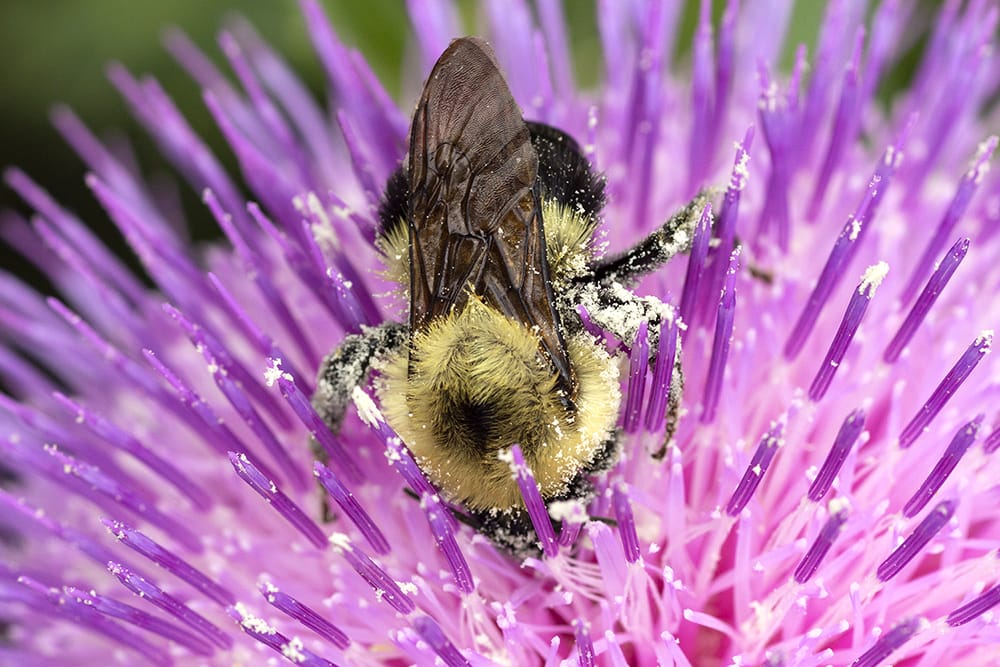
It’s been many years since the first pasture thistle I added to the sunny front garden developed a single lavender-pink flower. The thick stalk it bloomed on was short, about a foot tall, but the fuzzy flowerhead was amusingly enormous—and quite popular with our bumble bee friends. After this positive thistle experience, I’ve purchased and planted more Cirsium pumilum, and cheered on the subsequent “volunteers,” too.
Self-sowing plants, like pasture thistle, are part and parcel of growing native meadow species. And through the many years of scrutinizing plant behavior in my small garden, I’ve learned to appreciate the reseeding of certain species as I’ve also been inclined to curse others. In spite of its reputation as a spreader, the thistle in my garden volunteers far too little for my liking.
How I got hooked...
The reason there are native thistles in my garden habitat at all is that I’m a huge fan of Earth Sangha. I like visiting and volunteering for the nonprofit’s native plant nursery and learning about the plants they propagate. When conservation coordinator and flora encyclopedia Matt Bright is working at the nursery, he’ll gladly take a few minutes to tell me about this or that favorite plant of his. The thistles Matt propagates with his parents, Earth Sangha cofounders Lisa and Chris Bright, are among the exceptional natives he promotes.
“The combination of thorns and the tendency to spread doesn’t necessarily endear thistles to many gardeners, at least as far as first impressions go,” Matt told me. However, he adds, “The large pink-purple blooms and the sheer number of attractive pollinators that feed on thistle flowers tend to sway people over.”
I’m thankful that Matt began pushing thistles on me long before I was aware of their true ecological value.
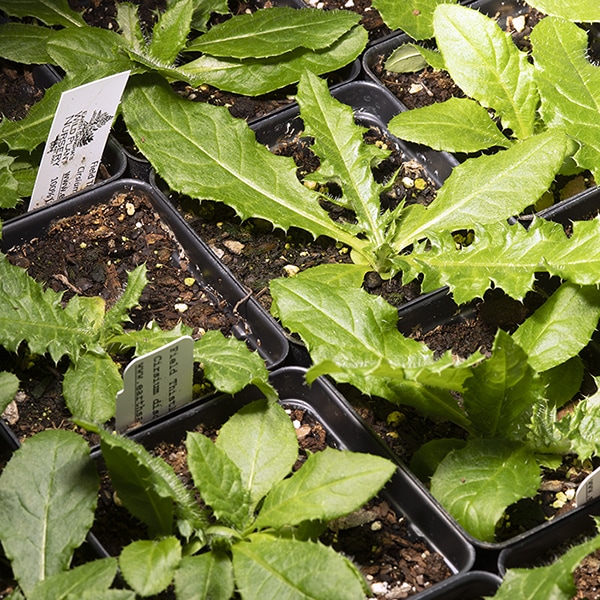
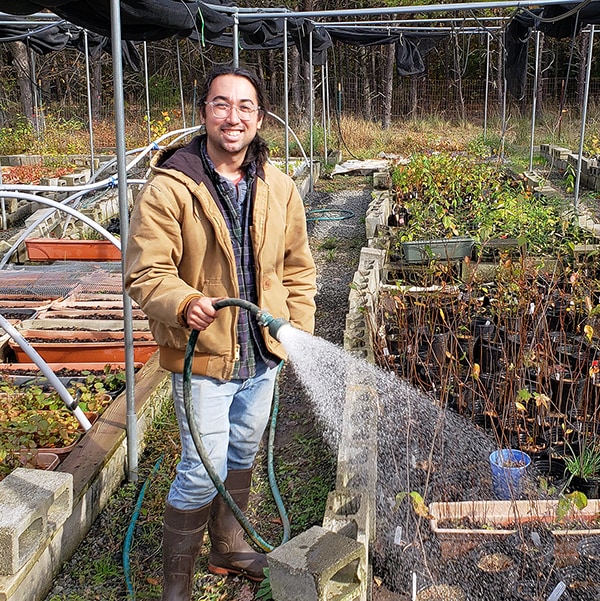
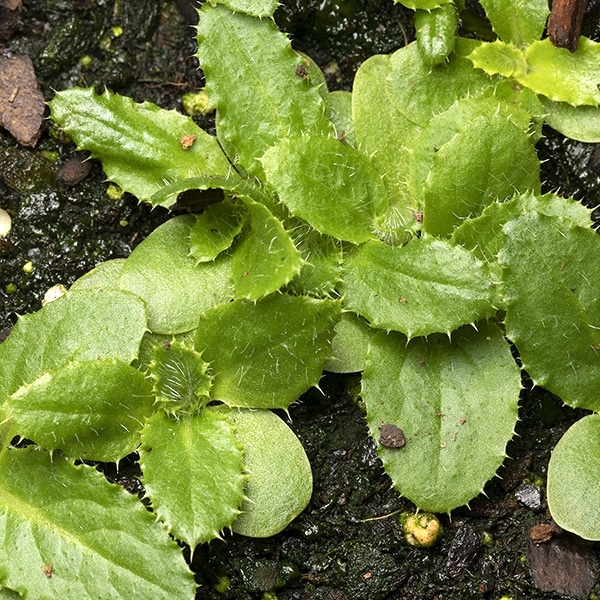
Thistles for Restoration and for Gardens
We’ve all probably heard campfire-worthy tales of monstrously tall and spreading thistles that are impossible to eradicate. But these descriptions should be restricted to the invasive non-native thistles, like bull thistle (Cirsium vulgare) and Canada thistle (Cirsium arvense); they are the bane of agricultural growers and anyone with ecologically sensitive areas to maintain. Our native thistles can be much more refined and are exponentially more valuable to wildlife. They certainly are no less beautiful than any of the other innumerable native plants we already covet.
Of the 200-plus ecotype species Earth Sangha grows, two are biennial thistles common to Northern Virginia and much of the Mid-Atlantic: the above-mentioned pasture thistle (Cirsium pumilum) and field thistle (Cirsium discolor).
“Thistles are very ecologically productive,” Matt said of the plants’ role in Earth Sangha’s meadow restoration efforts. Butterfly and moth larvae, along with a host of other insect herbivores, feed on the pollen, nectar, leaves and seeds, and pollinators and other flower visitors are plentiful as well. Come fall and winter, thistle seeds are great forage for goldfinches and other seed-eating birds.
So, which Cirsium species is Matt most fond of? “I prefer the discolor,” he said of the plant that can shoot up more than seven feet in height. “It makes a bold statement in the garden; there’s no mistaking it’s a thistle.” The bright pink and occasionally white flowers are gorgeous, he added, and their ability to “bring a wide variety of charismatic pollinators right up to eye-level is pretty much unrivaled.” Matt has observed skippers, swallowtails, monarch butterflies and bees frequenting those thistles—oftentimes all at once. “If you wanted to get photos of native butterflies,” he suggested, “sitting near a field thistle is an easy way to do it.”
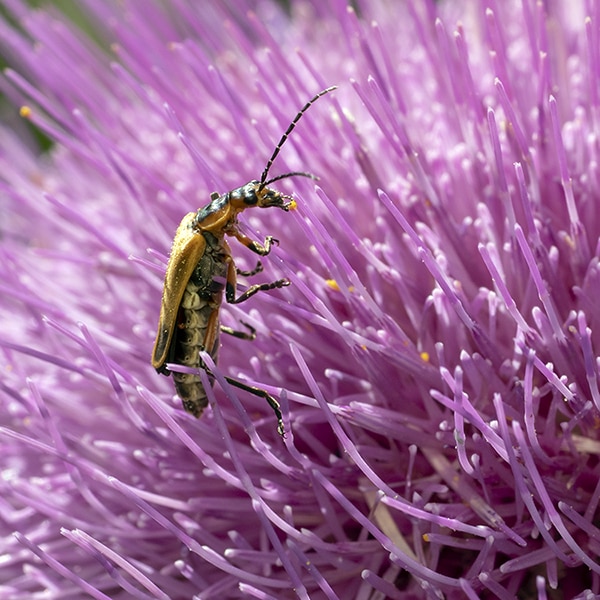
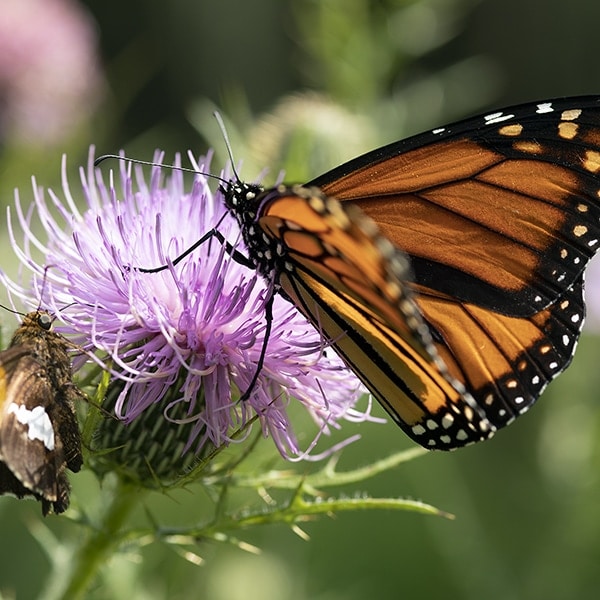



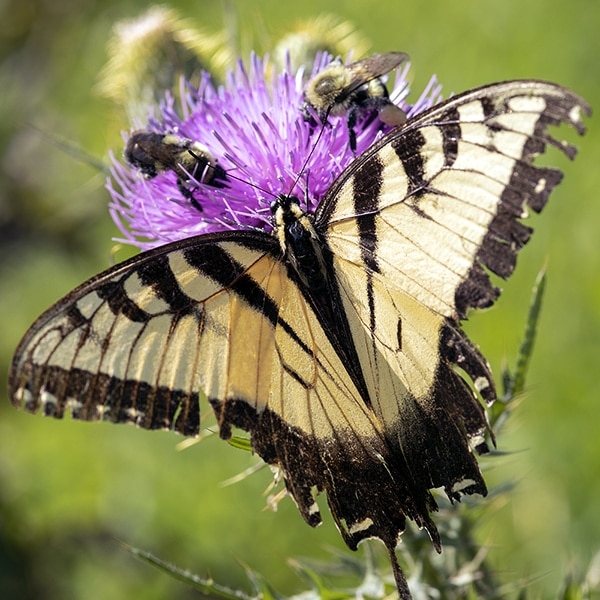
Counting Our Mid-Atlantic Thistle Species
Thistles are members of the aster and sunflower family (Asteraceae). Of the nine genera of thistles from the tribe Cardueae—Carduus, Carthamus, Carlina, Centaure, Cirsium, Cynara, Echinop, Onopordum and Silybum—the Cirsium genus comprises the true thistles, the most diverse and widespread of our native thistles.
Approximately 62 native Cirsium species are found in North America; 78% of which are primarily found in the West. I’ve calculated from various sources (The Xerces Society, Digital Atlas of the Virginia Flora, Virginia Department of Conservation & Recreation, Maryland Plant Atlas and The Pennsylvania Flora Project) that the Mid-Atlantic is home to approximately nine thistle species:
- Tall thistle (Cirsium altissimum)
- Soft thistle (Cirsium carolinianum)
- Field thistle (Cirsium discolor)
- Yellow thistle (Cirsium horridulum)
- Swamp thistle (Cirsium muticum)
- Nuttall’s thistle (Cirsium nuttallii)
- Pasture thistle (Cirsium pumilum)
- Coastal-plain thistle (Cirsium repandum)
- Virginia thistle (Cirsium virginianum)
Many of these thistles are critically imperiled or possibly extirpated from their natural areas.
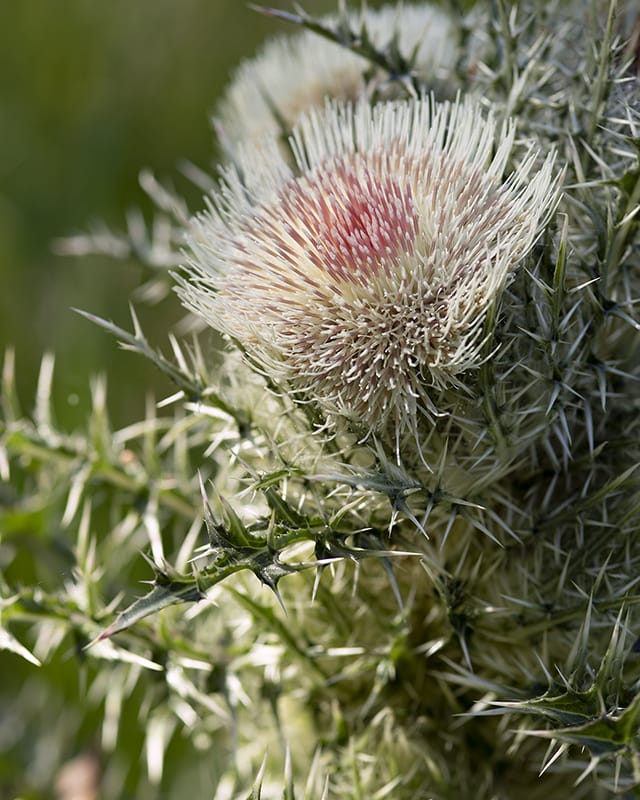
Characteristics & Identification
The flowers of thistles are typically shades of pink, lavender and purple, sometimes they’re white, and some species have yellow or red flowers. Thistles can be biennial, short-lived perennial or annual. The Xerces Society’s in-depth publication Native Thistles: A Conservation Practitioner’s Guide states, “Many thistle species are described as monocarpic, meaning they flower once in their lifetime and die. Many monocarpic species are biennial, flowering in the second year, but other species can flower in their first year or take two to eight years to flower.”
Both C. pumilum and C. discolor are biennials that spread by seed, not vegetatively like the invasive Canada thistle (C. arvense). The introduced Canada thistle, Matt pointed out, can choke out all sorts of native vegetation as well as native thistles. Unlike most of our thistles, he said, Canada thistle is a perennial that forms clonal root networks. Areas with high invasions can be reduced to dense monocultures that are difficult to control.
Here, Xerces offers an identification tip: “[A] characteristic that can differ between native and non-native thistles is the thick, white pubescence found on the leaf underside of many native thistles … which contrasts the hairless or gray haired leaf undersides of the widespread non-native thistles (Canada thistle and bull thistle).”
If you’re longing to hone your identification skills, you’ll generally find thistles blooming in mid- to late summer in open or sparsely wooded environments. I’ve encountered field and pasture thistles in and around Big Meadows in Shenandoah and in the Manassas National Battlefield Park; both sites are managed meadows in Virginia.
Growing and observing thistles in your own garden will help you to identify them out in the field.
Pasture Thistle in the Garden
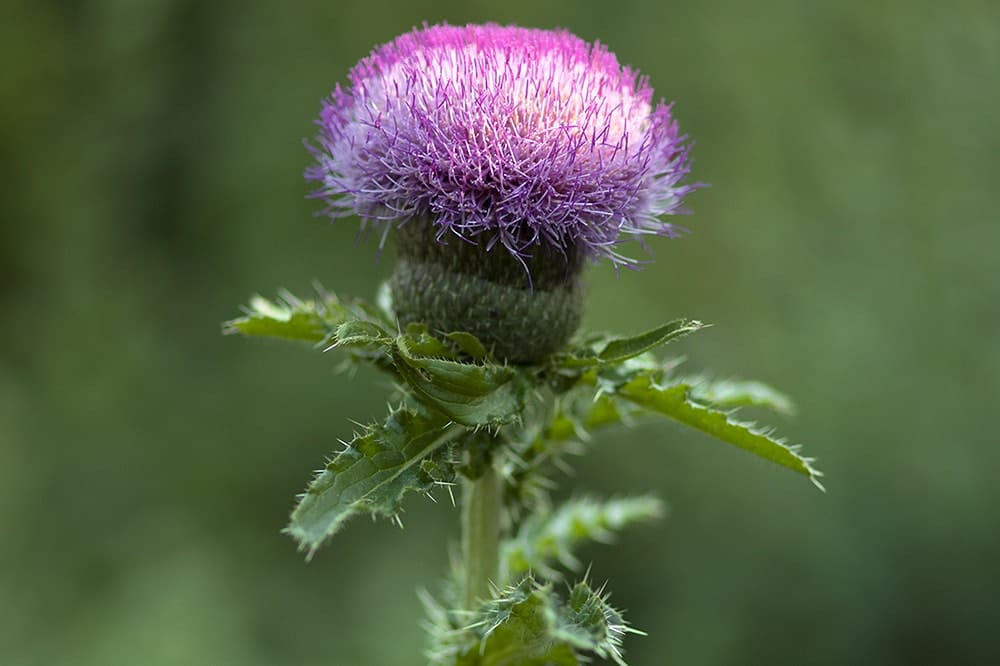
Pasture thistle (C. pumilum), unlike field thistle, doesn’t produce very many flowers. I often see one large flower; sometimes up to three (but once there were twenty on a single plant!). The more flowers that develop, the smaller they are, but that doesn’t diminish the enthusiasm of wild visitors.
When the Brights are collecting seed in the field they find low numbers of pasture thistle plants, possibly because the sites they visit are established meadows that haven’t experienced fire or other forms of disturbance in many years. Since thistles readily reseed in disturbed soils, a well-established garden may not be conducive to heavy self-sowing.
Pasture thistle prefers well-drained soil; I’ve had a few basal rosettes rot. And according to Matt, the basal rosettes tend to be prone to herbivory by insects, increasing the plants’ odds of being eaten before they get off the ground.
Pasture thistle should be handled with thick gloves; even on a vertically-challenged thistle, the spines can be ruthless.
Field Thistle in the Garden

Since I’ve been a bit of a coward and I haven’t experimented with the tall and more fruitful field thistle (C. discolor), I can’t say from experience how it performs in a garden setting. So, I queried the kind members of the Virginia Native Plant Society (VNPS) Potowmack Chapter and received responses from those who had introduced field thistle into their gardens. The four who replied all said they loved the plant for its floral display and wildlife value. I was delighted to learn that the front garden was where it is planted most.
The VNPS gardeners found that field thistle did reseed—but not too aggressively. They remove the infant volunteers that pop up along sidewalk edges, and one person pots and shares the extra basal rosettes. They leave the tall, spent stalks up through spring, and they cut bent or leggy ones or prop them upright to provide continuing habitat to insects. The stalks, they all agreed, had to be carefully handled with heavy gloves.
However, one of the VNPS members had completely removed the volunteers from her garden after her single plant had bloomed and reseeded, admitting she had concerns that the plants would take over her new native plant garden. She also said she struggled with the thorniness of the plant somewhat.
Her experience with field thistle may be a reflection of the age of her home habitat. Newer gardens are naturally more disturbed and prone to generous reseeding, and competition from surrounding plants may not be as vigorous as it would be in more established spaces. Soil conditions could also affect reseeding levels; unlike pasture thistle’s propensity for well-drained soil, field thistle doesn’t mind a moist environment.
Regardless of where you plant them, thistles will usually make themselves at home eventually. “Once a thistle flowers and goes to seed in your garden,” Matt advised, “you can be sure you’ll have thistles for a long time, so be certain you want them before you plant one.”
Thistles in Trouble
Like many of our native flora and fauna species, our once plentiful thistles are now in significant decline. Causes include habitat loss, indiscriminate herbicide spraying, fire suppression, regulation policies like noxious weed laws, and the release of alien bio-control insects (for control of invasive non-native thistle species). Many of North America’s native thistles are noted as species of concern. Five are on the Endangered Species List. Weather extremes will most likely exacerbate the drop in wild populations.
What better way to help native thistles than to plant them in our very own spaces?
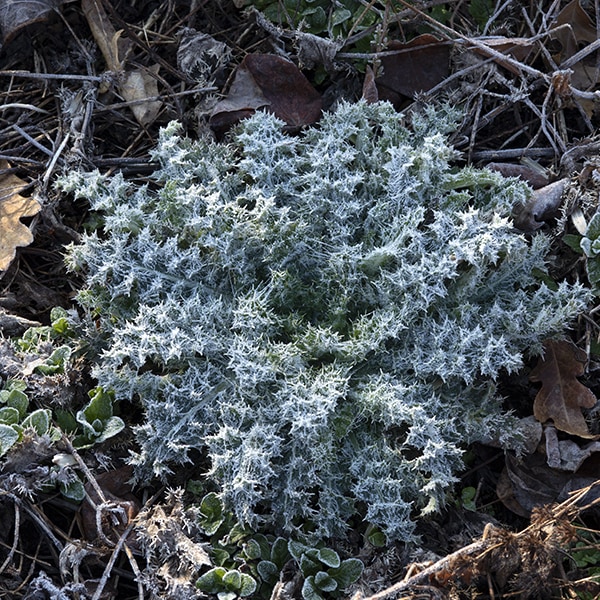
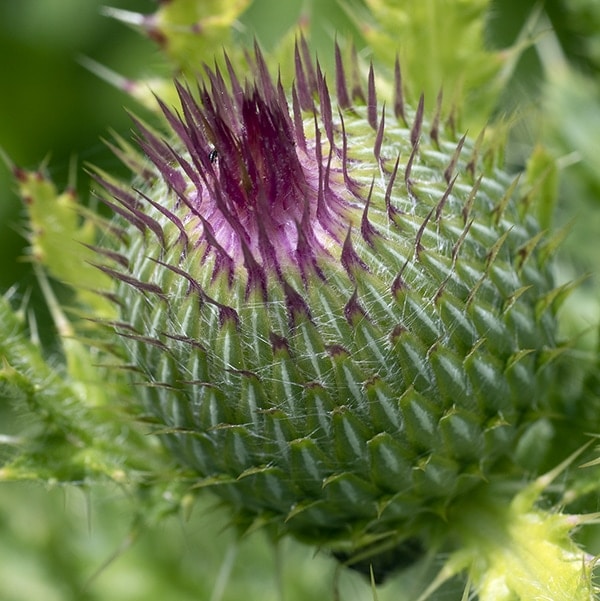
Why Plant Native Thistles?
- They rival the beauty of our other common flowering native plants.
- The Cirsium genus is visited by insects more than any other plant genus (Thorp et al 1983).
- Thistles have been found to be a higher-value nectar source than other forbs (Gut et al 1977).
- Our Mid-Atlantic native thistles host at least 27 native Lepidoptera (butterfly and moth) caterpillars, three specialist bees, and untold numbers of other specialist insects.
- Cirsium plants are food for many generalist insect herbivores, such as grasshoppers.
- Late-season flowering of thistles coincides with the migration of butterflies, like the monarch.
- Thistles produce high-protein seeds; some thistle species also contain a high amount of moisture.
- The spent stalks were found to be the most popular plant nesting sites for cavity nesting bees (Michener 1953).
- Soft, fluffy thistledown is used as nesting material by birds such as American goldfinches and blue-gray gnatcatchers.
- Hummingbirds and moths are also consumers of nutritious thistle nectar.
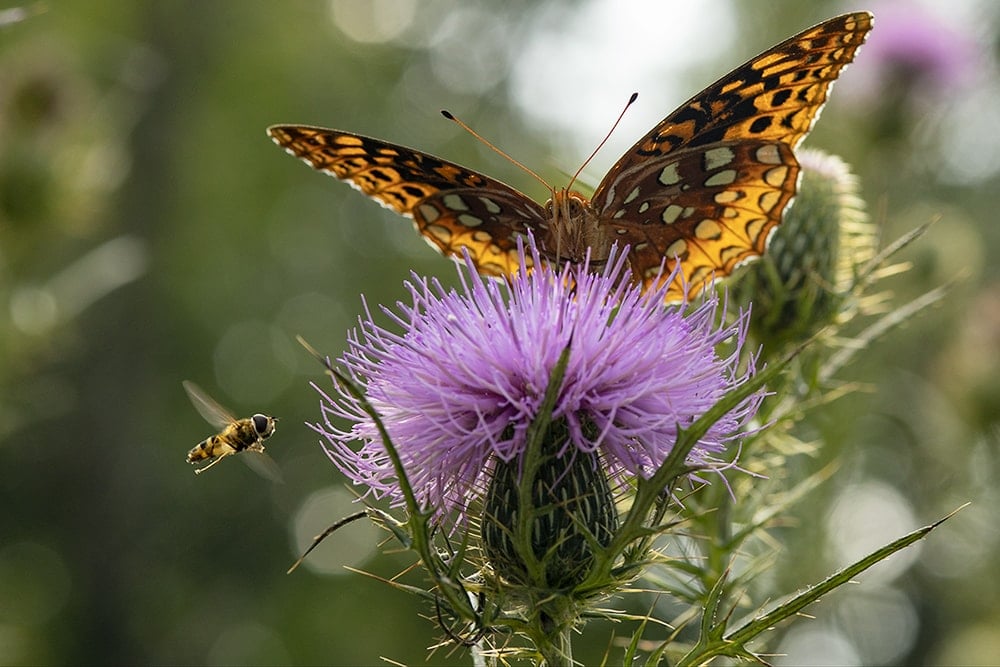
I’m excited about adding a field thistle or two to my garden soon. Weeding out some volunteers may be in my future but anyone growing native herbaceous plants—perennial, biennial or annual—will tell you that “editing” volunteers is part of the continuing maintenance.
There’s never been a better time to add an array of locally native plants to your garden. Give just one thistle plant a chance and see if it changes the way you view this misunderstood yet invaluable native.
More reading:
The Xerces Society: Native Thistles: A Conservation Practitioner’s Guide
The Natural Web: A Thistle Banquet
USDA Plant Fact Sheet: Field Thistle
